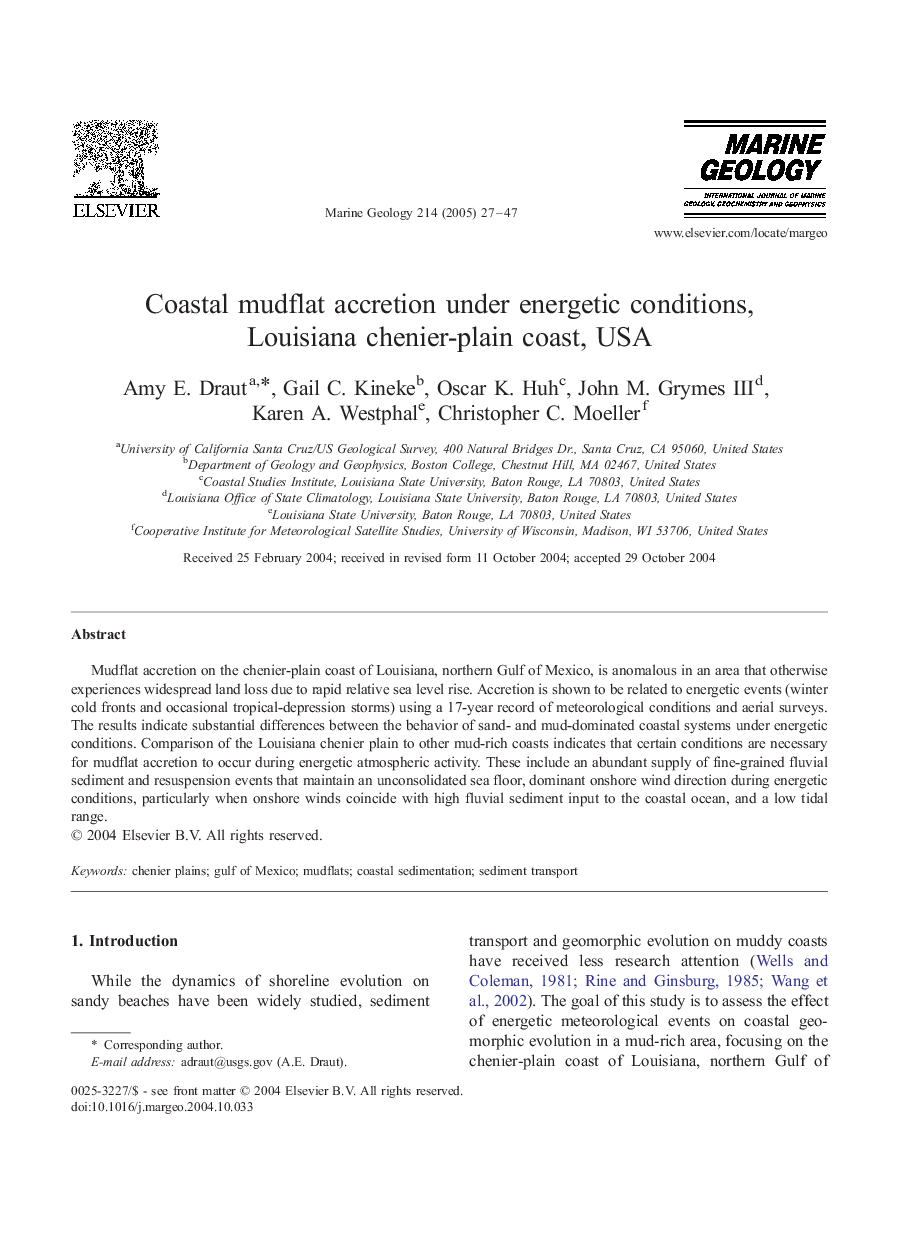| Article ID | Journal | Published Year | Pages | File Type |
|---|---|---|---|---|
| 9532802 | Marine Geology | 2005 | 21 Pages |
Abstract
Mudflat accretion on the chenier-plain coast of Louisiana, northern Gulf of Mexico, is anomalous in an area that otherwise experiences widespread land loss due to rapid relative sea level rise. Accretion is shown to be related to energetic events (winter cold fronts and occasional tropical-depression storms) using a 17-year record of meteorological conditions and aerial surveys. The results indicate substantial differences between the behavior of sand- and mud-dominated coastal systems under energetic conditions. Comparison of the Louisiana chenier plain to other mud-rich coasts indicates that certain conditions are necessary for mudflat accretion to occur during energetic atmospheric activity. These include an abundant supply of fine-grained fluvial sediment and resuspension events that maintain an unconsolidated sea floor, dominant onshore wind direction during energetic conditions, particularly when onshore winds coincide with high fluvial sediment input to the coastal ocean, and a low tidal range.
Related Topics
Physical Sciences and Engineering
Earth and Planetary Sciences
Geochemistry and Petrology
Authors
Amy E. Draut, Gail C. Kineke, Oscar K. Huh, John M. III, Karen A. Westphal, Christopher C. Moeller,
